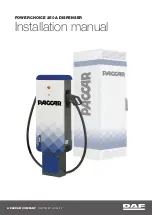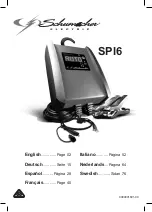
ZGR SWIT NG
Operation manual
www.zigor.com
6
1.3 Environmental precautions
1.4 Precautions on receiving the unit
Visually check that the warehouse location is adequate by checking its characteristics (clean, free of leaks with
good ventilation); the floor must be level and have sufficient load resistance for the equipment.
Checking the material
On receiving the material, a visual inspection should be made in order to detect any anomalies that may have
occurred during transport.
List and check all the items indicated on the delivery note. Should any component be missing, notify the
forwarding agent within the established deadline.
Dispose of the packaging in an ecological way: ZIGOR, based on the exceptions detailed
in the First Additional Provision of Law 11/1997 on commercial or industrial packaging,
informs that the final holder of the waste of used containers and packaging, as responsible
for them, you must deliver them in appropriate conditions for reuse, to an authorized
recuperator, recycler or re-valuer.
The subsets of the system are recyclable products and cannot be treated as household / municipal waste at
the end of its useful life.
To preserve the environment, manage them in accordance with current environmental regulations and
requirements in each country or community. In case of doubt, consult the manufacturer.
Correct product disposal: This electrical-electronic device (AEE) is marked with the symbol
of compliance with the European Directive 2012/19 / EU (WEEE) regarding used electrical
and electronic equipment (Waste electrical and electronic equipment WEEE, RD 110/2015).
The Directive provides the general framework valid throughout the European Union for the
removal and reuse of waste from EEE.
To dispose of this product and ensure its proper management, follow the current local
environmental legislation and regulations. In this way it will contribute to conserve the
environment.
The wheeled bin crossed out on the product, in the documentation or on its packaging, means that the
electrical-electronic devices and batteries must be collected separately at the end of their life cycle.
Before the deposit of the RAEE in their collection facilities, the batteries must be removed and deposited
separately from the rest of the RAEE for proper management, according to the current local legislation and
environmental regulations.
Never dispose of with household waste. In this way it will help preserve the environment.
These symbols are valid in the European Union and in those places where separate collection systems are
available.
Correct disposal of batteries: Used batteries are reusable consumer products and a recycling
process must be carried out.
Used batteries that do not go through the recycling process must be disposed of according to
the instructions regarding special waste, in accordance with the regulations and environmental
requirements in force in each country or community. This requirement applies in the European
Union and in those places where separate collection systems are available.
In case of doubt, consult the manufacturer.
In this way it will contribute to conserve the environment.
















































